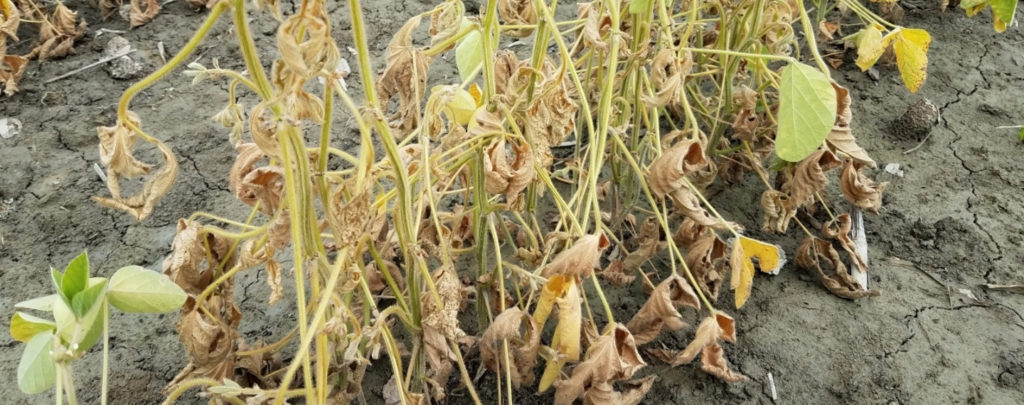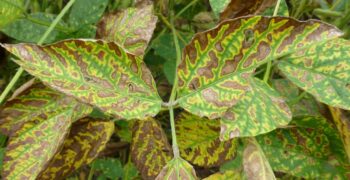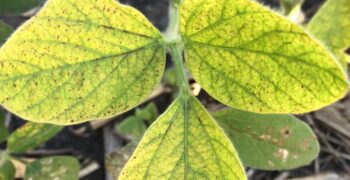Background:
Fusarium is very common in all soils across the united states and parts of canada. There are roughly 12 fusarium species that can infect soybean roots. Several hundred plant species are vulnerable to the wide spread soil borne pathogen fusarium. Fusarium can infect seeds as soon as they are planted, resulting in damping off, poor or slow emergence, weak and stunted plants. The infected roots will become a reddish-brown to almost black color and result in plants wilting and dying. Foliar symptoms include scorching of leaves and in the middle to lower canopy leaves will yellow and eventually fall off. Later in season, hot and dry weather conditions favor the growth of fusarium. The fungus lives in the soil and on plant residue. Plants in stressed environments have a greater chance of contracting the disease, these environments include, compaction, herbicide injury, nematodes, high pH, IDC, nutrient deficiencies.
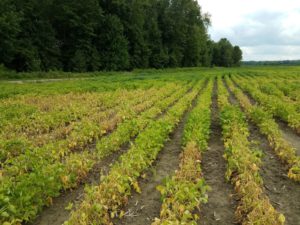 Scouting:
Scouting:
When scouting early in the season, check fields that may have been planted when it was cool and wet to check for root rot. Root rot symptoms include infected roots will become a reddish-brown to almost black color and result in plants wilting and dying. Damping off or slow, poor emergence can also be a result of fusarium. Later during the growing season, hot and dry weather will favor infection. Symptoms include scorching of leaves and in the middle to lower canopy leaves will yellow and eventually fall off. Fields with a history of fusarium, nematodes, and IDC are prime candidates for infection of fusarium. If you believe fusarium could be in your field, call your local agronomist and have a sample sent into a university lab for testing.
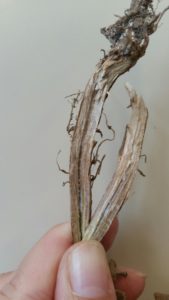 Management:
Management:
- Reduce stress or plant injury within the field
- Avoid cool and wet planting conditions
- Fungicide seed treatments can protect against the fusarium pathogens
Sources:
Fusarium Root Rot and Wilt of Soybean
